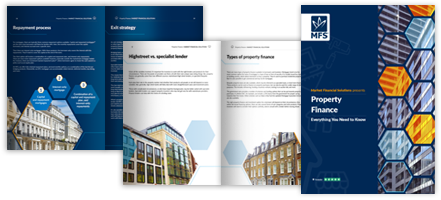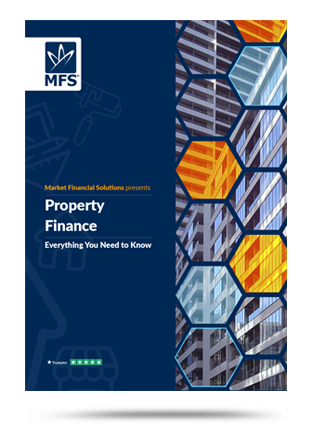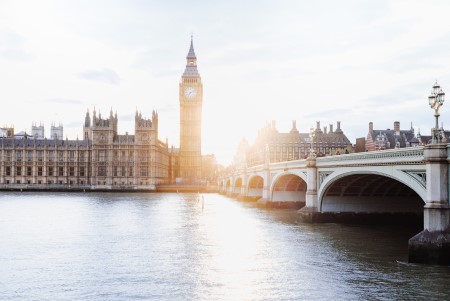Market Financial Solutions are a bridging loan and buy-to-let mortgage provider and are not legal, financial, investment or tax advisers. This document is for informational purposes only and does not, and should not be considered, to constitute legal, financial, investment or tax advice or be relied upon by any person to make a legal, financial, investment or tax decision. Therefore, Investors are encouraged to seek appropriate professional advice. The information in this content is correct at time of writing.

Labour has big housebuilding plans. As part of its manifesto, Labour vowed to build 1.5 million homes within five years of getting into power[1]. Of course, the main concern here is whether the government will be able to hit this target. But on top of this, the question remains – where will all these homes be built?
To partly address this, Labour plans to build new towns across the UK. In fact, it set up a New Towns Taskforce[2] in mid-2024 to help get the job done. This taskforce will focus on: “large-scale new communities built on greenfield land and separated from other nearby settlements, but also a larger number of urban extensions and urban regeneration schemes that will work with the grain of development in any given area.
“The unifying principle will be that each of the new settlements will contain at least 10,000 homes, although we expect a number to be far larger in size. Collectively, we expect they could provide hundreds of thousands more homes in the decades to come.”
How the New Towns Taskforce plans to deliver
Recently, the New Towns Taskforce revealed it was moving onto phase two of its work: exploring locations for new towns. Specifically, it started: “focusing on areas ripe for early intervention as part of a first initial wave, alongside the longer-term pipeline. Location selection for new towns should be strategically rational, supported wherever possible by existing infrastructure and ideally with local support to ensure successful development.
“We will also be undertaking further analysis to understand the impact of different delivery and funding models, as well as the approach to land acquisition and placemaking, to inform our final recommendations for government[3].”
Now, after months of planning and speculation, the government has revealed where it plans to start building these new towns.
Where Will They Be Based?
Unveiled at the Labour conference, the New Towns Taskforce revealed the 12 locations it recommended to the government. Work is still needed to assess the suitability of these locations, which won’t be completed until at least Spring 2026[4].
But, as of writing, the 12 recommended locations are:
- “A standalone settlement in Adlington, Cheshire East; to serve the growing industries in Greater Manchester and Cheshire, as identified in the government’s Industrial Strategy.
- A corridor of connected development in South Gloucestershire, across Brabazon and the West Innovation Arc; building in one of the highest productivity areas in the country with a high value research, advanced engineering and technology economy.
- An expanded development bringing together Chase Park and Crews Hill in Enfield; delivering green development and helping address London’s acute housing need.
- Redevelopment of the former airbase at Heyford Park in Cherwell; connecting to Oxford and building on the existing progress and commitment to high-quality placemaking; referencing the area’s past and supporting its future in innovative technology industries.
- Urban development in Leeds; catalysing on the city’s existing economic prospects and capturing the benefits of the governments £2.1 billion local transport funding allocation for the Combined Authority by delivering well-connected, high-quality homes in the South Bank to support the city centre.
- Inner-city development and densification in Manchester, Victoria North; supporting continued growth and attracting high-skilled workers to service the city’s diverse industries.
- A standalone settlement in Marlcombe, East Devon; strengthening the region’s labour supply and supporting the Exeter and East Devon Enterprise Zone.
- A ‘Renewed Town’ in Milton Keynes; reinvigorating the city centre and expanding to the north and east whilst reshaping the way people travel, by delivering a Mass Rapid Transit system.
- Densified development in Plymouth; evolving Britain’s Ocean City and capitalising on the government’s £4.4 billion investment in HMNB Devonport, Western Europe’s largest naval base.
- A new settlement in Tempsford, Central Bedfordshire; to maximise the benefits of East West Rail by building a well-connected new town in the heart of the Oxford-Cambridge Growth Corridor.
- The creation of a riverside settlement in Thamesmead, Greenwich; unlocking inaccessible land in the city and improving connectivity if the proposed extension of the Docklands Light Railway can be delivered to enable the development.
- Expanded development at Worcestershire Parkway, Wychavon; accelerating delivery around the existing train station to help meet regional housing need and act as a model for sustainable, carbon neutral development.”

Will Labour’s New Towns Even Get Built?
Labour’s plans are ambitious to say the least. Given the state’s record, many doubt we’ll come anywhere close to building 1.5 million homes over the coming years, with or without new Labour towns. The UK has had a target of building at least 300,000 new homes every year for some time, but we haven’t hit that target once in decades[5].
Nevertheless, the current government, with a sizeable majority behind it, appears to be taking major steps to meet the challenge. To start with, Labour has vowed to build on low-quality Green Belt land, known as the “Grey Belt”. By doing so, it aims to avoid inevitable pushback on trying to develop on protected high-value Green Belt land.
Also, a Planning and Infrastructure Bill[6] has been introduced which plans to open up the planning process, prevent blockers from halting plans, and get builders to build quicker.
The Potential Uniqueness of Labour’s New Towns, and the Opportunities
There may be one key differentiator between Labour’s new towns, and those that came before – what they’re made of. Under the government’s net zero plans, Labour aims to increase the number of homes built with timber frames[7].
This could bode well for developers and property investors. Generally, when compared to the cost of bricks, timber structures are much more affordable[8].
More generally, when new towns are created successfully, it can create opportunities for property investors. Popular towns grow and see their populations rise, and an expanding populus needs more housing, local shops, service providers, and everything else that adds to a thriving community.
It’s clear to see that when done right, new towns have the potential to turn into economic powerhouses. In the post-war years, there was a substantial effort to get new towns built across the UK. Nearly all of them saw their intended population size exceeded. As David Churchill, Partner at Carter Jonas[9], detailed: “Hemel Hempstead, created in 1947, was originally planned to have a population of 65,000 but has grown to 155,217 today – an increase of 139%.
“Similarly, Bracknell (1949) has exceeded its initial target by 106% and Milton Keynes (1967) by 92%. Likewise, Stevenage, Harlow, Welwyn Garden City, Crawley and Hatfield (all created in the 1940s) have exceeded their proposed population size, while only Runcorn, with a population of 62,100, is yet to meet its original target (71,000).”
One thing is assured in the UK property market – there is a clear need for more housing and community. Should buyers and renters flock to new locations that can offer just that, property investors can get in on the action. As always, Market Financial Solutions will be there to facilitate action in Labour’s new towns.
The Complete Guide to
Property Finance
Everything you need to know
- Foundation & different finance types
- Useful tools
- Apply them in real life
- Market insights & more
[1] https://www.bbc.co.uk/news/articles/c9d528g755qo
[2] https://www.gov.uk/government/publications/policy-statement-on-new-towns/policy-statement-on-new-towns
[3] https://assets.publishing.service.gov.uk/media/67ad8ff5e400ae623383250b/Building_new_towns_for_the_future.pdf
[4] https://www.gov.uk/government/news/expert-taskforce-recommends-locations-for-new-towns
[5] https://www.bbc.co.uk/news/61407508
[6] https://www.gov.uk/government/news/biggest-building-boom-in-a-generation-through-planning-reforms
[7] https://www.telegraph.co.uk/news/2025/03/11/labours-plan-timber-houses-net-zero-environment/
[8] https://www.checkatrade.com/blog/cost-guides/timber-frame-house-cost/
[9] https://www.carterjonas.co.uk/planning-development-insite/labours-new-towns-policy






